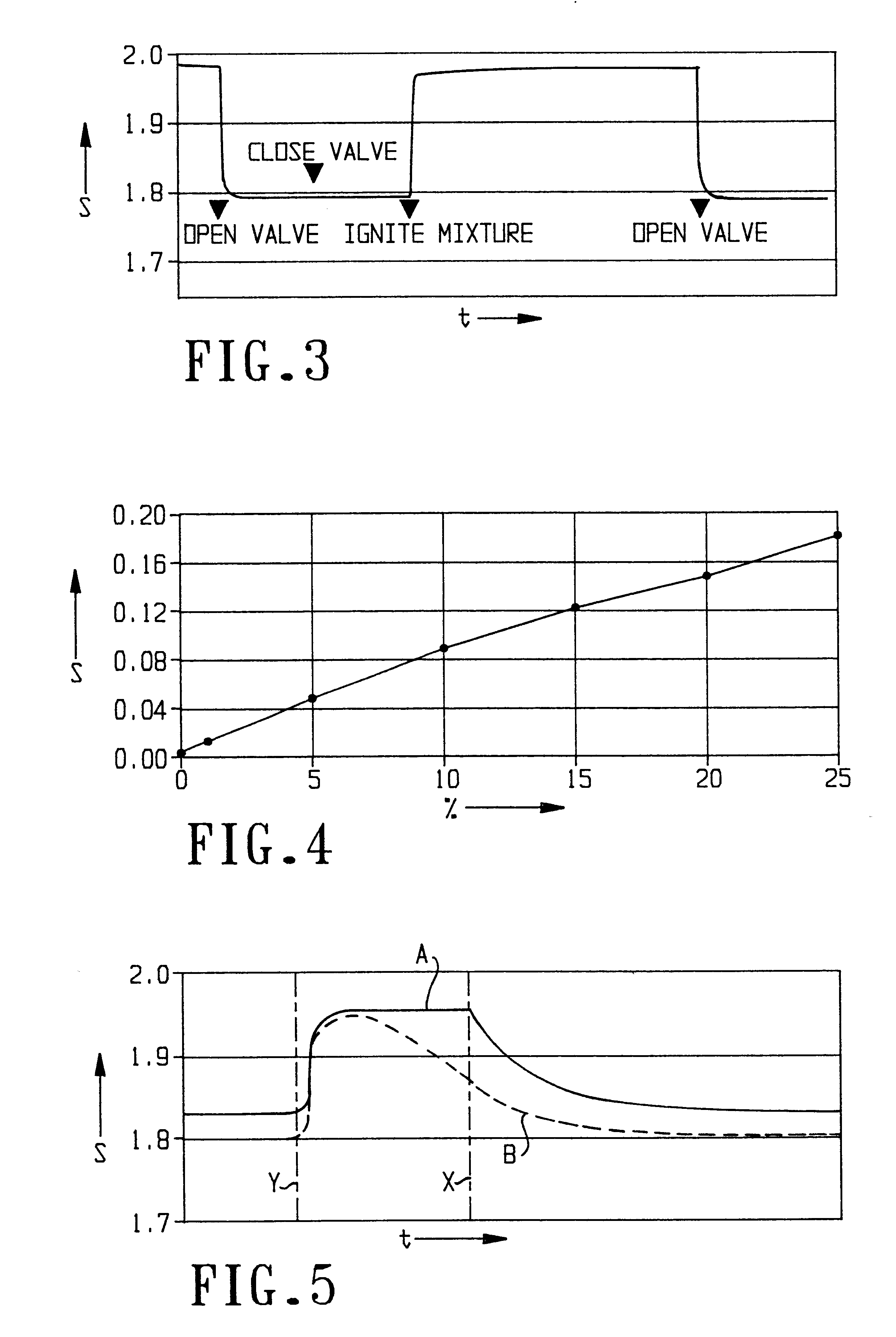Combustibility monitor and monitoring method
- Summary
- Abstract
- Description
- Claims
- Application Information
AI Technical Summary
Benefits of technology
Problems solved by technology
Method used
Image
Examples
first embodiment
FIG. 1 is a schematic cross sectional view of an apparatus according to the invention;
second embodiment
FIG. 2 is a schematic cross sectional view of an apparatus according to the invention;
FIG. 3 is a diagram illustrating an example of a cycle when operating the method according to the invention;
FIG. 4 is a diagram illustrating signal strength as a function of concentration of a critical first component when operating an embodiment of the inventive method;
FIG. 5 is a diagram illustrating signal curves for different concentrations of a critical first component when operating another embodiment of the inventive method;
third embodiment
FIG. 6 is a schematic cross sectional view of an apparatus according to the invention for measuring by means of a pulsing method of operation;
FIG. 7 is a diagram illustrating signal evolution when measuring by means of a pulsing method using a flushing gas; and
FIG. 8 is a diagram showing signal change when monitoring hydrogen in relation to its partial pressure in an atmosphere containing nitrogen and helium as additional components.
DETAILED EXPLANATION OF THE DRAWINGS
FIG. 1 is a diagrammatic illustration of an apparatus 1 according to the invention connected via a conduit 102 with an environment E, e.g. the atmosphere contained in an enclosed space (not shown) potentially or effectively containing a gas, e.g. hydrogen, that would form a combustible mixture with the oxygen that is normally present within or outside of an enclosed space which is of analytical interest because it requires continuous monitoring.
Reaction chamber 12 is provided with flame arrestor in the form of a valve ...
PUM
 Login to View More
Login to View More Abstract
Description
Claims
Application Information
 Login to View More
Login to View More - R&D
- Intellectual Property
- Life Sciences
- Materials
- Tech Scout
- Unparalleled Data Quality
- Higher Quality Content
- 60% Fewer Hallucinations
Browse by: Latest US Patents, China's latest patents, Technical Efficacy Thesaurus, Application Domain, Technology Topic, Popular Technical Reports.
© 2025 PatSnap. All rights reserved.Legal|Privacy policy|Modern Slavery Act Transparency Statement|Sitemap|About US| Contact US: help@patsnap.com



